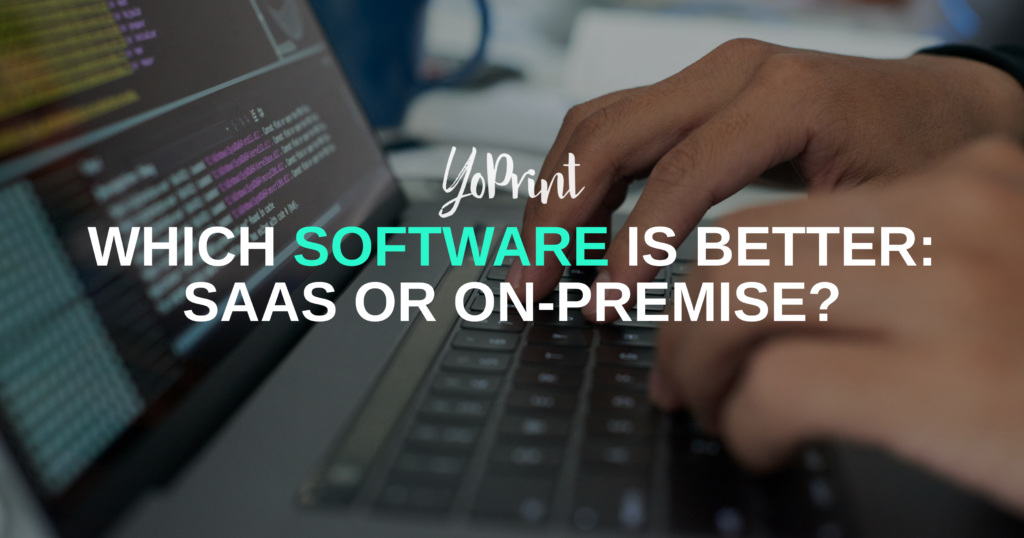As we kick start 2024, the U.S. economy presents a complex landscape marked by robust job growth and cautious consumer confidence. Despite notable job additions, a lag in real income growth, when adjusted for inflation, means consumers are not ramping up their spending, as much as they would love to. This financial prudence is reflected in reduced retail foot traffic in physical stores. Let’s deep dive into the current economic situation.
KEYPOINTS:
- Inflation on a halt and slowing down
- January Effect is happening as we speak, causing sticky inflation
- Small businesses need to find some light
- Job growth, but cautious consumer confidence. Why?
- Recession in Kingdom Far, Far Away
Inflation is Slowing Down
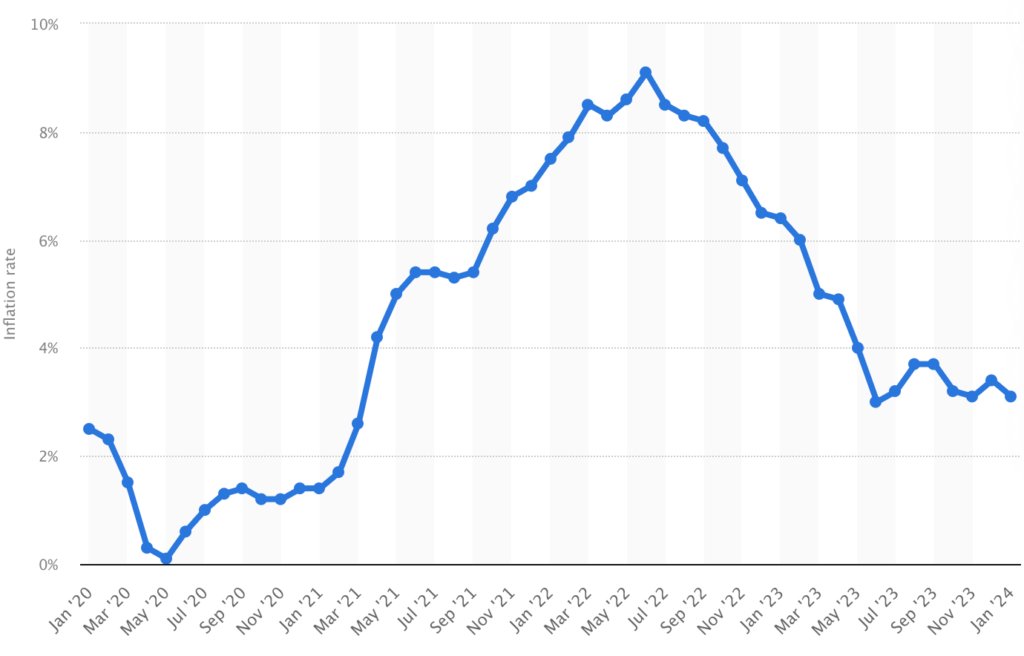
- The January data has largely been encouraging, indicating potential for growth forecasts to exceed expectations. Regarding inflation, the decrease in housing costs and the reduction in used car prices are expected to help control inflation in the upcoming months.
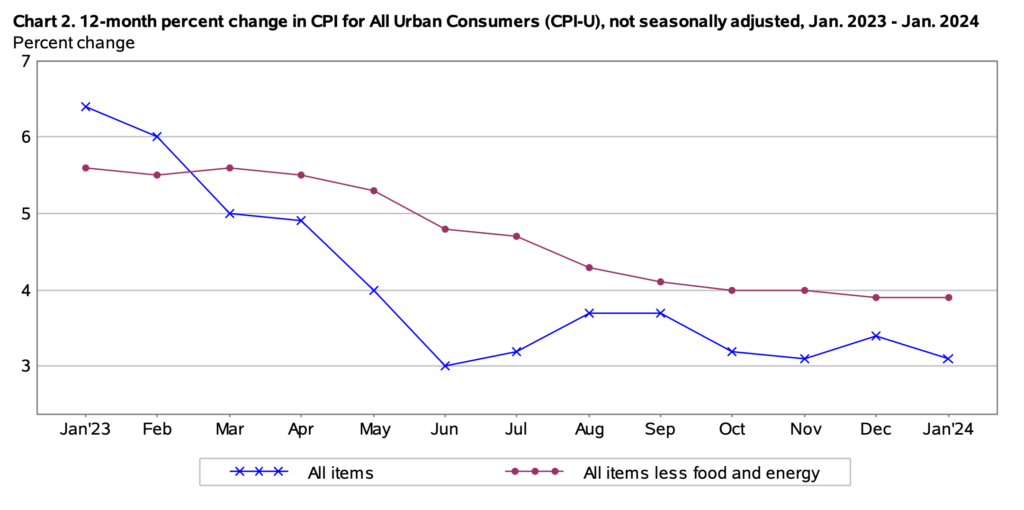
- Business owners will need to monitor traffic and promotional trends closely in the coming weeks to determine whether the January slowdown is temporary or indicative of a more sustained challenge to consumer demand.
- Unfavorable seasonal adjustments are likely to weigh on the reported spending data: this is payback for favorable seasonals in December.
- Moreover, the weather played a critical factor to foot traffic too! Widespread winter storms disrupted retail spending in January.
- Other than that, the consumer looks healthy, with upside risks to spending from accelerating real wages.
Sticky Inflation Due to January Effect?
- A peculiar rise in inflation rates in the month of January, attributed to businesses adjusting prices at the start of the year is nothing new.
- This pattern has been observed historically, although its predictability and strength can vary from year to year.
- It suggests that the inflation spike may not be a long-term concern but rather a temporary adaptation post holiday seasons.
- So, the current sticky inflation could strongly be due to this phenomenon.
- Sticky inflation means that the prices of things you buy, like food, clothes, and services, aren’t going down even when you might expect them to. It’s like when you have a sticker that you can’t peel off easily.
- Why does this happen? Simple. Businesses keep wanting to make the same amount of money, and people still buying stuff despite the high prices, and the cost of making things staying high.
- Now that employment is on the positive side, it is unlikely that prices will be going down anytime soon. Prices will remain as it is for quite some time.
- However, consumers are adapting well to the inflation. Though more consciously, people are still spending their money.
Gloomy for Small Businesses
- This sticky inflation and also combined with the January effect will be a concerning outlook for small businesses in the nearest months to come.
- Small businesses are facing tough times because people are not as confident in spending their money, making it harder for these businesses to make sales and profits.
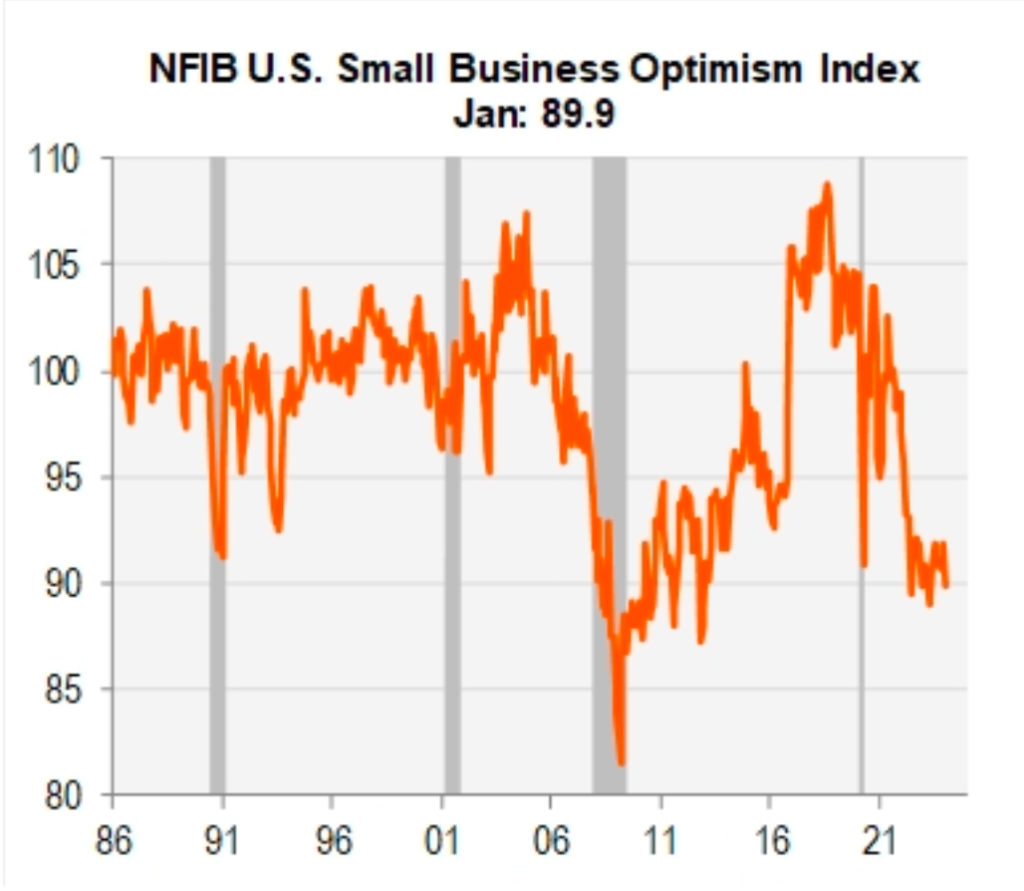
- In January 2024, small business confidence dropped unexpectedly, highlighting significant challenges in employment, capital expenditures, and profits.
- They are also hesitant to spend on growing or updating their businesses due to uncertain future growth.
- Loans or credit, which they might need to keep running or expand, are harder to come by and more expensive.
- On top of that, costs keep going up, but businesses can’t always pass those costs onto customers without losing sales. Plus, they’re stuck with more stock than they cannot sell because people are buying less.
Jobs Growth Healthy, but Less Foot Traffic
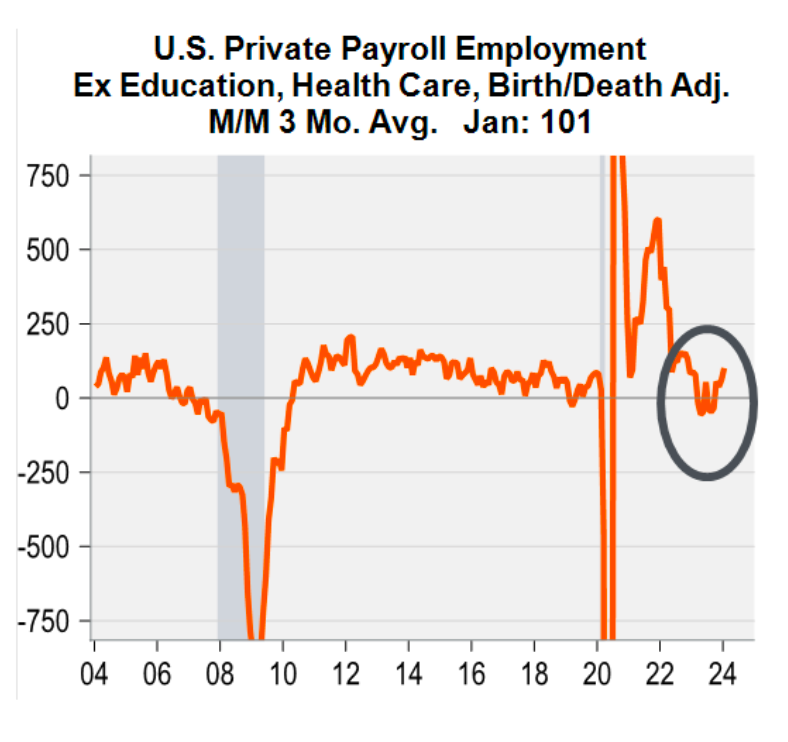
- More people are getting jobs and the stock market is doing well, which usually makes people feel good about spending money which is why we can see good numbers in consumer spending.
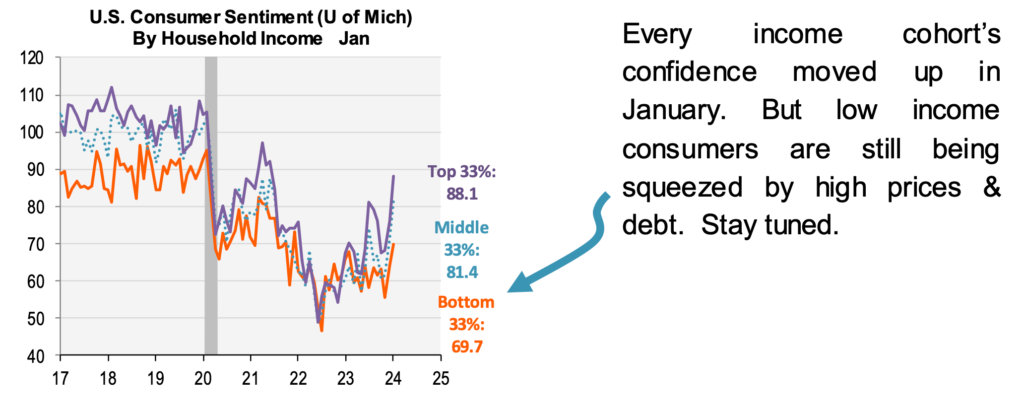
- Strong labor market with significant job additions, will typically boosts consumer confidence.
- But, it points out that this confidence has not translated into increased retail foot traffic, suggesting that despite more jobs, the spending power of consumers is not growing accordingly.
- This shouldn’t immediately be seen as a sign of weakening demand.
- Why? → Because people are catching up on their delinquencies, backlogs of debts, when they were out of jobs and are currently more mindful of their spending. This is seen especially in the low income consumers.
- So, though there is not much purchase power for consumers now, the economy will gain momentum when January effect has subsided.
- Post January data has come out and it does not look optimistic. People aren’t rushing out to buy more stuff because their money isn’t going as far as it used to, as they are more conscious when spending their money and almost always actively seeking for deals.
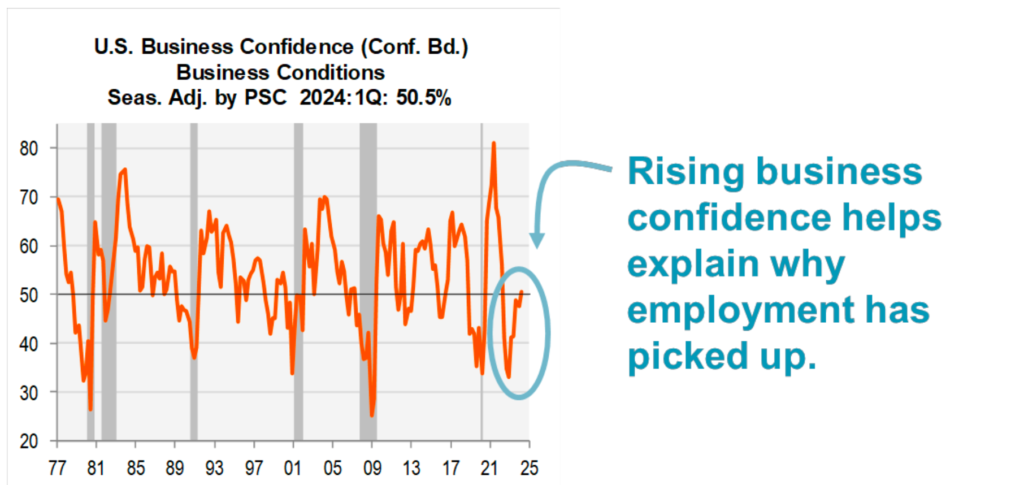
- Also, business confidence is turning up, in line with improvements in employment. Expectations of Federal Reserve rate cuts, a buoyant stock market, and the anticipation of increased government spending have all contributed positively.
- However, it’s important to note that CEOs are not expected to significantly expand their workforce.
- Big companies such as Amazon, UPS, Snap, Estee Lauder are still laying off employees and minimising their workforce in order to cut costs.
Sahm Says: Recession Not Happening Anytime Soon
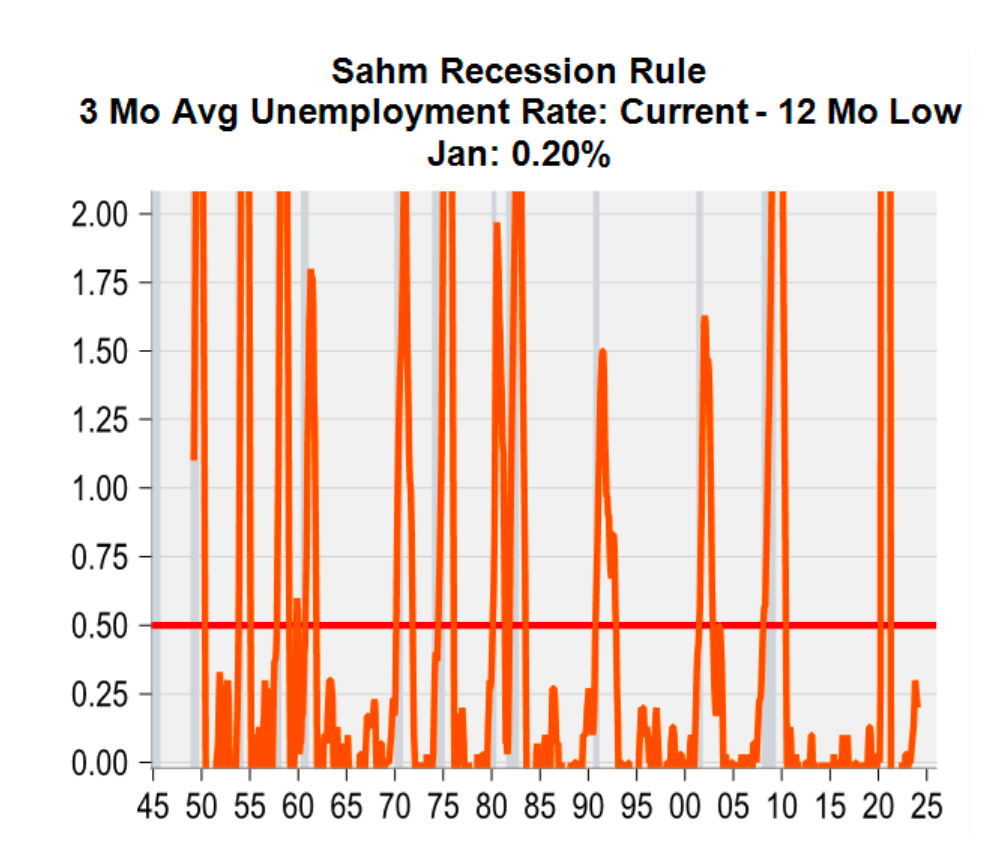
The Sahm rule has consistently (that’s right, without exception) signaled a recession accurately. We are currently looking at numbers that are far from it. But, there’s a decline observed at the state level.
- Hip hip! Hooray! Rejoice business owners, because recession is not happening anytime soon.
- Amidst this backdrop, the Sahm rule reassures us that a recession is not impending, despite economic strains.
- Election year will play a role as anticipations of fiscal stimulus could offer a buffer, potentially guiding the economy toward a gentle stabilization.
- If anything, most recent data point to a reacceleration here in 1Q of 2024. Indeed, the Atlanta Fed’s GDP now has 1Q growth at 3.4% q/q a.r., based on strong payrolls and PMIs, offset by weak auto sales, which fell last month.
The US economy demonstrated resilience with a focus on job growth and cautious consumer behavior. The job market showed signs of normalization, with the US adding a significant number of jobs, indicating continued support for employment levels.
Consumer spending is expected to grow at a slower pace compared to 2023, influenced by factors such as diminished excess savings, plateauing wage gains, low savings rates, less pent-up demand, and the restart of student loan payments. Despite these pressures, healthy household balance sheets and debt servicing levels, alongside tight labor markets, are anticipated to support positive overall consumer spending growth in 2024, albeit at a lower rate. Though struggling, consumers are still adapting to high prices.
If prices remain as it is, and employment maintains its numbers, we might see a better market in the months to come, as people are able to pay off their debts, loans and catch up on delinquencies. Foot traffic might be better and market will be stronger than it was by the second half of 2024.


